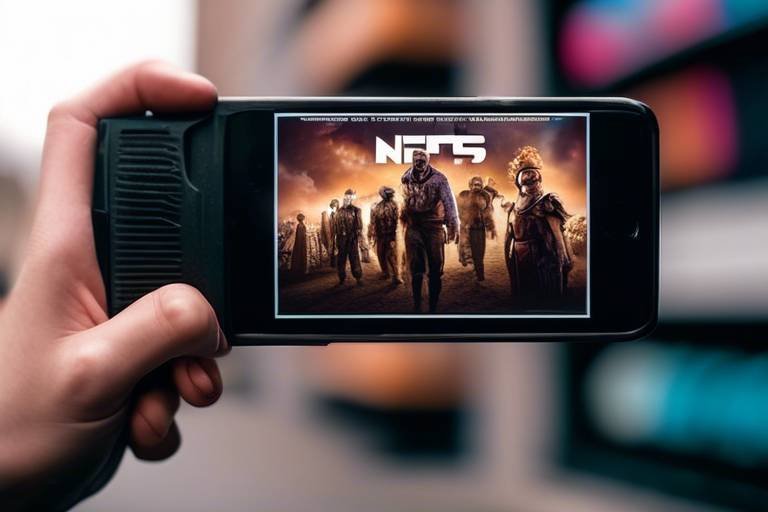How to Participate in Crypto Community Governance
Participating in crypto community governance is like being part of a vibrant, ever-evolving ecosystem where your voice truly matters. Imagine being able to influence the direction of a project you believe in, shaping its future just like a gardener nurtures a plant. In the world of cryptocurrencies, governance is the process that allows you, the holder, to have a say in crucial decisions affecting the project. Whether it’s voting on proposals, engaging in discussions, or simply staying informed, your participation is vital. But how do you get started? Let’s dive into the mechanics of community governance and explore how you can effectively engage and make an impact.
Understanding the significance of community governance in the crypto space is crucial. It’s not just about financial investment; it’s about **collaboration**, **transparency**, and **empowerment**. When you participate in governance, you’re not just a passive observer; you become an active player in the community. This involvement fosters a sense of belonging and ownership, allowing users to influence the direction of projects they are invested in. Think of it as a democratic process where every voice counts, ensuring that decisions reflect the community's collective interests rather than a handful of individuals. In essence, community governance is the backbone that supports the decentralized ethos of cryptocurrencies.
Different cryptocurrencies adopt various governance models, each with its unique flavor. Understanding these models is essential for effective participation. Broadly, governance can be categorized into **on-chain** and **off-chain** governance, each offering distinct advantages and challenges. On-chain governance allows stakeholders to vote directly on proposals through the blockchain, ensuring a high level of transparency and engagement. However, it can also lead to issues such as voter apathy and governance attacks. On the other hand, off-chain governance involves discussions and decisions made outside the blockchain, often through forums or social media. While this approach can foster broader community engagement, it may lack the transparency and formal structure that on-chain governance provides.
On-chain governance is like a digital town hall meeting where every stakeholder can cast their vote on proposals. This method enhances transparency and engagement, allowing users to see how many votes a proposal has received and who voted for it. However, it’s not all sunshine and rainbows. Challenges such as voter apathy—where users fail to participate in votes—can significantly impact decision-making. Additionally, governance attacks, where malicious actors manipulate the voting process, pose a real threat. Despite these challenges, on-chain governance remains a powerful tool for community engagement.
Within on-chain governance, various voting mechanisms exist, each with its pros and cons. Here’s a quick overview of some common methods:
- Simple Majority: The proposal passes if it receives more votes in favor than against.
- Quadratic Voting: Allows voters to express the intensity of their preferences, giving more weight to passionate voters.
- Liquid Democracy: Combines direct and representative democracy, allowing voters to delegate their votes to others.
Despite its advantages, on-chain governance faces several challenges. Low voter turnout is a common issue, as many users may not feel motivated to participate or may not fully understand the proposals. Additionally, the risk of manipulation looms large, with bad actors potentially skewing results. The complexity of proposals can also hinder effective decision-making, as users may struggle to grasp the nuances of intricate changes. Therefore, it’s crucial to stay informed and engaged to navigate these challenges effectively.
Off-chain governance, on the other hand, allows for discussions and decisions made in a more informal setting. Think of it as a community gathering at a coffee shop, where ideas are exchanged freely. While this approach can foster broader community engagement, it often lacks the transparency and formal structure that on-chain governance provides. Decisions made in these forums may not be as visible or verifiable, making it essential for participants to be vigilant and proactive in seeking out information and engaging in discussions.
Effective participation in crypto governance requires strategic approaches. Here are some ways individuals can engage:
- Attend Meetings: Join community meetings to stay informed about ongoing discussions and proposals.
- Join Discussion Forums: Engage with other community members through forums, social media, and chat groups.
- Utilize Governance Tools: Familiarize yourself with voting platforms and proposal submission systems.
Many projects provide governance tools that facilitate participation, such as voting platforms and proposal submission systems. Understanding how to use these tools efficiently is key to making an impact. Think of these tools as your toolkit—without them, you might struggle to contribute effectively. Familiarizing yourself with the available resources can empower you to navigate the governance landscape with confidence.
Connecting with other community members enhances engagement and collaboration. Building a network of like-minded individuals can lead to more informed discussions and collective action within governance processes. It’s like forming a study group; together, you can share insights, debate ideas, and ultimately make more informed decisions. So, don’t shy away from reaching out and forming connections within the community!
Q1: What is crypto community governance?
A1: Crypto community governance refers to the processes and structures that allow stakeholders to make decisions about a cryptocurrency project, influencing its direction and policies.
Q2: How can I participate in governance?
A2: You can participate by voting on proposals, joining discussions in forums, attending community meetings, and utilizing governance tools provided by the project.
Q3: What are the benefits of participating in governance?
A3: Participating in governance allows you to have a say in the project's future, fosters a sense of community, and helps ensure that decisions reflect the collective interests of stakeholders.
Q4: What are the challenges of on-chain governance?
A4: Challenges include low voter turnout, risks of manipulation, and the complexity of proposals, which can hinder effective decision-making.
Q5: How does off-chain governance differ from on-chain governance?
A5: Off-chain governance involves discussions and decisions made outside the blockchain, often through informal channels, while on-chain governance relies on direct voting through the blockchain.

The Importance of Community Governance
Understanding the significance of community governance in the crypto space is crucial. In a world that thrives on decentralization, community governance acts as the backbone of many blockchain projects. It fosters collaboration among users, ensuring that every voice is heard and valued. Imagine a ship sailing through the vast ocean of cryptocurrency; community governance is the crew working together to navigate towards a common destination. When individuals actively participate in governance, they not only influence the direction of projects they are invested in but also contribute to a culture of transparency and accountability.
Community governance empowers users to take charge. It’s not just about financial investment; it’s about emotional and intellectual investment too. When users feel they have a stake in the decision-making process, they are more likely to engage, share ideas, and contribute to the project’s success. This engagement is vital because it creates a sense of ownership and belonging within the community. Without active participation, projects risk falling into the hands of a few, which can lead to decisions that may not align with the broader community's interests.
Furthermore, community governance can significantly enhance the resilience of a project. By involving diverse perspectives in the decision-making process, projects can adapt to challenges and changes in the market more effectively. When users collaborate and share knowledge, they can identify potential pitfalls and opportunities that might not be visible to a centralized authority. This collective intelligence is a powerful tool that can drive innovation and sustainability within the ecosystem.
However, it’s essential to recognize that community governance is not without its challenges. For instance, the effectiveness of governance can be hindered by factors such as low voter turnout or lack of understanding of the governance processes. To combat these issues, it is vital for communities to create educational resources and facilitate discussions that demystify governance. By doing so, they can encourage more members to participate actively.
In summary, community governance in the crypto space is not just a buzzword; it is a foundational element that shapes the future of decentralized projects. It allows users to collaborate, promotes transparency, and empowers individuals to influence the direction of the projects they care about. As we continue to navigate the ever-evolving landscape of cryptocurrency, understanding and participating in community governance will be key to fostering innovation and ensuring the longevity of these projects.

Types of Governance Models
In the dynamic realm of cryptocurrency, understanding the different governance models is essential for anyone looking to dive into community participation. Each model offers unique ways for stakeholders to engage, influence, and ultimately shape the future of their chosen projects. It's like choosing between different paths in a vast forest—each path leads to a different destination, with its own set of challenges and rewards.
Primarily, governance models can be categorized into two main types: on-chain and off-chain governance. Each has its distinct characteristics that cater to varying community needs and project goals. To illustrate this, let’s break down these models and explore their features.
On-chain governance is like a direct democracy where every stakeholder can cast their vote on proposals through the blockchain. This model emphasizes transparency and engagement, allowing users to see how their votes impact decisions. However, it’s not without its pitfalls. Imagine a voting booth where only a handful of people show up; that scenario can lead to misrepresentation of the community's will. Challenges such as voter apathy and potential governance attacks can undermine the effectiveness of this model.
Within on-chain governance, various voting mechanisms come into play, each with its own advantages and disadvantages. For instance:
- Simple Majority: This is the most straightforward method, where the option with the most votes wins. However, it can lead to decisions that don't reflect the broader community's interests.
- Quadratic Voting: This method allows participants to express the strength of their preferences, not just their choices. It’s like having a weighted vote, which can lead to more nuanced outcomes.
- Liquid Democracy: This hybrid model allows voters to delegate their votes to trusted representatives. It’s a blend of direct and representative democracy, offering flexibility but also requiring trust among participants.
Despite its advantages, on-chain governance faces several challenges. Low voter turnout is a significant issue; many stakeholders may not engage due to a lack of awareness or interest. Additionally, the risk of manipulation looms large, as those with significant holdings can sway decisions disproportionately. Lastly, the complexity of proposals can deter participation, as many users may find it challenging to understand intricate technical details.
On the flip side, off-chain governance operates outside the blockchain, often taking place in forums, social media, or community meetings. This model can foster broader engagement, as it allows for informal discussions that can lead to consensus-building. However, it often lacks the transparency and formal structure that on-chain governance provides. Think of it as a town hall meeting where everyone can voice their opinions, but without a clear record of who said what or how decisions were made.
In conclusion, the choice between on-chain and off-chain governance models boils down to the specific needs and culture of the community involved. Both models offer unique advantages and challenges, and understanding these can significantly enhance your participation in the crypto governance landscape.

On-Chain Governance
On-chain governance is a fascinating aspect of the cryptocurrency landscape, allowing stakeholders to directly engage with decision-making processes through the blockchain. Imagine being part of a community where your voice truly matters, where every vote you cast can influence the future of a project you care about. This method of governance enhances transparency and engagement, as all voting activities are recorded on the blockchain, making them publicly accessible. However, it’s not all sunshine and rainbows; there are challenges that come with this model that participants need to navigate.
One of the most significant advantages of on-chain governance is its ability to create an inclusive environment. Anyone holding tokens can participate in the voting process, thereby democratizing decision-making. This is in stark contrast to traditional corporate structures where only a select few have a say. However, despite its potential, on-chain governance faces some hurdles. For instance, voter apathy is a common issue. Many token holders may not be motivated to vote, either due to a lack of understanding of the proposals or simply because they feel their vote won’t make a difference. This can lead to skewed outcomes where only a small percentage of the community influences decisions.
Moreover, on-chain governance is not immune to manipulation. There have been instances where a group of individuals with significant token holdings can sway votes in their favor, raising concerns about the integrity of the governance process. To illustrate, consider the following table that outlines some of the key features, advantages, and challenges of on-chain governance:
| Feature | Advantages | Challenges |
|---|---|---|
| Voting Process | Direct participation, enhanced transparency | Voter apathy, low turnout |
| Proposal Submission | Open to all stakeholders | Complexity of proposals may deter participation |
| Record Keeping | Immutable records on the blockchain | Risk of governance attacks |
As we delve deeper into the intricacies of on-chain governance, it’s essential to understand the various voting mechanisms that facilitate this process. Mechanisms such as simple majority, quadratic voting, and liquid democracy each come with their own set of pros and cons. For example, simple majority voting is straightforward but can lead to majoritarian rule, while quadratic voting allows for more nuanced preferences but can be more complex to implement. Each mechanism influences how decisions are made and can greatly affect the community's engagement levels.
In conclusion, while on-chain governance presents a promising avenue for community engagement in the crypto space, it is not without its challenges. As participants, it’s vital to stay informed and actively engage, ensuring that our voices are heard and that we contribute to a fair and effective governance process. So, are you ready to cast your vote and make a difference?

Voting Mechanisms
When it comes to on-chain governance, the voting mechanisms employed play a pivotal role in shaping the decision-making process within a cryptocurrency community. Each mechanism has its unique characteristics, advantages, and challenges, which can significantly influence how effectively community members can participate in governance. Let's dive into some of the most common voting mechanisms used in this space.
One popular mechanism is the simple majority voting. In this model, a proposal is accepted if it garners more votes in favor than against. While this approach is straightforward and easy to understand, it can sometimes lead to polarization within the community, as decisions may be swayed by a small, vocal majority, leaving minority opinions unheard.
Another intriguing method is quadratic voting. This mechanism allows participants to express the intensity of their preferences rather than just a binary choice. In quadratic voting, individuals can allocate votes to a proposal based on how strongly they feel about it, but the cost of votes increases quadratically. For example, if you want to vote twice, it would cost you four credits instead of two. This approach aims to ensure that the voices of those who feel strongly about an issue are amplified, potentially leading to more nuanced decision-making. However, it also requires a deeper understanding of the voting system, which can be a barrier for some participants.
Then there's the concept of liquid democracy, which combines elements of direct and representative democracy. In this model, individuals can vote directly on issues or delegate their voting power to someone they trust. This flexibility can lead to more informed decision-making, as participants can choose to rely on experts or trusted members for specific proposals. However, it also raises questions about accountability and the potential for voter fatigue, as individuals may feel overwhelmed by the number of decisions they need to make.
To illustrate these mechanisms further, here's a table summarizing their key features:
| Voting Mechanism | Key Features | Advantages | Challenges |
|---|---|---|---|
| Simple Majority | Basic yes/no voting | Easy to understand | May overlook minority opinions |
| Quadratic Voting | Vote intensity representation | Amplifies strong preferences | Complexity can deter participation |
| Liquid Democracy | Direct voting or delegation | Informed decision-making | Risk of voter fatigue |
Each of these voting mechanisms has its own set of implications for how governance is conducted within a crypto community. Understanding these differences is crucial for participants who wish to engage effectively in the governance processes of their chosen projects. By selecting the right mechanism, communities can enhance participation and ensure that decisions reflect the collective will of their members.
- What is on-chain governance? On-chain governance refers to decision-making processes that occur directly on the blockchain, allowing stakeholders to vote on proposals transparently.
- How does quadratic voting work? Quadratic voting allows participants to express the strength of their preferences by allocating votes, with the cost of additional votes increasing quadratically.
- What are the benefits of liquid democracy? Liquid democracy offers flexibility by allowing individuals to vote directly or delegate their voting power, promoting informed decision-making.

Challenges in On-Chain Governance
On-chain governance, while revolutionary, is not without its challenges. One of the most pressing issues is low voter turnout. Imagine organizing a big party and only a handful of friends show up; that’s how it feels when a significant percentage of stakeholders don’t participate in voting. This apathy can stem from various factors, including a lack of understanding of the proposals or simply feeling that their vote won’t make a difference. The challenge here is to create an environment that encourages participation and makes it easy for users to engage.
Another significant hurdle is the risk of manipulation. Just as in any democratic process, there are individuals or groups who may attempt to sway votes in their favor, leading to outcomes that don’t necessarily represent the interests of the broader community. This is akin to a few loud voices dominating a conversation, overshadowing the opinions of the majority. To combat this, transparency in the voting process and the ability to audit votes becomes crucial.
Furthermore, the complexity of proposals can be a barrier to effective decision-making. Many proposals can be laden with technical jargon and intricate details that might confuse the average participant. If a proposal feels like deciphering a foreign language, how can anyone be expected to vote on it? This complexity can lead to uninformed decisions or, worse, complete disengagement from the governance process.
To illustrate these challenges, consider the following table that summarizes the key issues faced in on-chain governance:
| Challenge | Description |
|---|---|
| Low Voter Turnout | Many stakeholders do not participate in voting, leading to decisions that may not reflect the majority's views. |
| Manipulation Risks | Individuals or groups may attempt to influence outcomes for their benefit, undermining the democratic process. |
| Complexity of Proposals | Proposals can be overly technical, making it difficult for average users to understand and engage in voting. |
Addressing these challenges requires a concerted effort from both the developers of the blockchain and the community members. Implementing educational initiatives, simplifying proposal language, and enhancing transparency can significantly improve engagement and trust in the governance process. After all, a thriving crypto community is built on informed and active participation, and overcoming these hurdles is essential for fostering a vibrant ecosystem.
- What is on-chain governance? On-chain governance refers to decision-making processes that occur directly on the blockchain, allowing stakeholders to vote on proposals and changes.
- Why is voter turnout important in on-chain governance? High voter turnout ensures that decisions reflect the community's collective interests, leading to more democratic and fair outcomes.
- How can manipulation in governance be prevented? Implementing transparent voting processes and enabling audits can help deter manipulation and build trust among participants.
- What can be done about complex proposals? Simplifying language and providing educational resources can help participants better understand proposals, encouraging informed voting.

Off-Chain Governance
Off-chain governance plays a pivotal role in the decentralized world of cryptocurrencies, serving as a platform for discussions and decisions that occur outside the confines of the blockchain. Unlike on-chain governance, where every decision is recorded on the blockchain through voting mechanisms, off-chain governance relies heavily on community interaction through forums, social media, and other communication channels. This method fosters a sense of community and allows for more fluid discussions, enabling participants to express their opinions and concerns in real-time.
One of the significant advantages of off-chain governance is its ability to engage a broader audience. Since discussions can happen on various platforms, individuals who may not be technically inclined or familiar with blockchain technology can still contribute to the governance process. This inclusivity can lead to richer discussions and a more diverse array of viewpoints, ultimately resulting in well-rounded decision-making.
However, off-chain governance isn’t without its challenges. The lack of formal structure can lead to disorganization, making it difficult to track decisions and proposals. Transparency can also become an issue, as discussions that take place on private forums or social media may not be accessible to all community members. This can create a divide between those who are actively participating in discussions and those who are unaware of ongoing governance matters. To combat these issues, many communities establish guidelines and best practices for off-chain governance, ensuring that discussions remain constructive and inclusive.
In addition to fostering engagement, off-chain governance allows for a more nuanced approach to decision-making. Participants can deliberate over complex proposals, weigh the pros and cons, and gather feedback before formalizing any decisions. This iterative process can be likened to a brainstorming session, where ideas evolve and improve through collaborative input. However, it’s essential to have a system in place to ensure that the most relevant and impactful ideas rise to the top, which can sometimes be a challenge in a less structured environment.
To summarize, off-chain governance is a vital component of the crypto ecosystem. It encourages participation from a wider audience while also presenting unique challenges in terms of organization and transparency. By embracing open discussions and establishing clear guidelines, communities can harness the benefits of off-chain governance while mitigating its drawbacks.
- What is off-chain governance? Off-chain governance refers to decision-making processes that occur outside the blockchain, often through forums or social media, allowing for broader community engagement.
- What are the benefits of off-chain governance? It fosters inclusivity, encourages diverse viewpoints, and allows for more nuanced discussions compared to on-chain governance.
- What challenges does off-chain governance face? Challenges include a lack of transparency, potential disorganization, and difficulty in tracking decisions made during discussions.
- How can communities improve off-chain governance? Establishing guidelines, utilizing structured communication channels, and promoting transparency can enhance the effectiveness of off-chain governance.

Engagement Strategies for Participants
Participating in crypto community governance isn't just about casting votes; it's about actively engaging with the community and shaping the future of the projects you care about. So, how can you effectively get involved? First off, attending community meetings is a fantastic way to start. These gatherings, whether virtual or in-person, allow you to hear firsthand about ongoing proposals and initiatives. You can ask questions, share your thoughts, and even network with other enthusiasts. Think of it as a town hall for crypto lovers!
Another effective strategy is to join discussion forums. Platforms like Discord, Reddit, and specialized governance forums provide a space for vibrant discussions. Here, you can bounce ideas off others, learn from experienced members, and stay updated on community sentiments. Engaging in these discussions can give you a clearer picture of what matters most to your community and how you can contribute to those discussions.
Moreover, utilizing governance tools is essential for making your voice heard. Many crypto projects offer dedicated platforms where you can vote on proposals, submit your ideas, or even review others' suggestions. Familiarizing yourself with these tools can significantly enhance your participation. For example, some platforms provide user-friendly interfaces that guide you through the voting process, making it easier for even the most novice users to get involved.
Building a network is another key strategy. Connecting with like-minded individuals can amplify your impact. When you collaborate with others, you can share knowledge, strategize on proposals, and mobilize support for initiatives you believe in. Think of it like forming a committee; together, you can achieve much more than you could alone. You might even find mentorship opportunities that can deepen your understanding of governance processes.
Lastly, consider the power of social media. Platforms like Twitter and LinkedIn are great for staying informed about the latest developments in your chosen projects. Following key figures in the crypto space, participating in Twitter Spaces, or even sharing your insights can raise your profile within the community. Remember, every tweet or post can spark a conversation, so don’t hesitate to express your thoughts!
In summary, effective engagement in crypto community governance is multifaceted. By attending meetings, participating in forums, utilizing governance tools, building networks, and leveraging social media, you can significantly enhance your involvement. The more engaged you are, the more influence you will have in shaping the projects that matter to you.
Q1: What is community governance in crypto?
A1: Community governance in crypto refers to the process by which stakeholders participate in decision-making for a project. This can involve voting on proposals, discussing initiatives, and influencing the direction of the project.
Q2: Why is participation important?
A2: Participation is crucial because it fosters collaboration, ensures transparency, and empowers users to influence the projects they are invested in. A well-engaged community can lead to better decision-making and project outcomes.
Q3: What are governance tools?
A3: Governance tools are platforms and systems that facilitate participation in community governance, such as voting platforms, proposal submission systems, and discussion forums. They help streamline the decision-making process.
Q4: How can I stay updated on governance issues?
A4: You can stay updated by following community forums, attending meetings, and engaging with social media channels related to your project. Subscribing to newsletters or joining dedicated chat groups can also keep you informed.
Q5: Can anyone participate in governance?
A5: Yes! Most crypto projects encourage participation from all stakeholders. Whether you're a long-time investor or a newcomer, your voice matters in shaping the community and project direction.

Utilizing Governance Tools
In the ever-evolving world of cryptocurrencies, governance tools play a pivotal role in empowering community members to engage effectively in the decision-making processes that shape their favorite projects. These tools are designed to streamline participation, making it easier for individuals to voice their opinions and influence the direction of the projects they care about. Think of governance tools as the digital megaphones of the crypto community—amplifying voices and ensuring that every stakeholder has the opportunity to be heard.
One of the most common types of governance tools is the voting platform. These platforms allow users to cast their votes on proposals directly, often in a secure and transparent manner. For instance, platforms like Snapshot or Aragon enable token holders to vote on various issues, from protocol upgrades to funding allocations. This direct voting mechanism not only enhances transparency but also fosters a sense of ownership among community members. However, it's essential to understand how these tools work to maximize their potential.
In addition to voting, many projects offer proposal submission systems. These systems enable community members to propose new ideas or changes, ensuring that innovation is a collective effort rather than a top-down mandate. Imagine being able to suggest a new feature for your favorite app or a change in governance structure—this is the power that proposal systems grant to users. However, it's crucial to craft proposals carefully, as poorly structured proposals can lead to confusion and disengagement from the community.
Furthermore, engaging with governance tools isn't just about using them; it's also about understanding the data and analytics behind decisions. Many platforms provide insights into voting trends, proposal success rates, and community sentiment. By analyzing this data, participants can make informed decisions and advocate for changes that align with the community's desires. It's akin to being a detective, piecing together clues to understand the broader narrative of the project's governance.
To sum it up, utilizing governance tools effectively requires a blend of participation, proposal crafting, and data analysis. By embracing these tools, community members can significantly impact their projects and ensure that governance is a truly democratic process. Remember, the more engaged you are, the more influence you wield in shaping the future of the crypto space!
- What are governance tools in cryptocurrency?
Governance tools are platforms and systems that enable community members to participate in decision-making processes, such as voting on proposals or submitting new ideas for consideration.
- How can I participate in governance using these tools?
You can participate by registering on voting platforms, submitting proposals, and engaging in discussions within the community to understand the issues at hand.
- Are there risks associated with using governance tools?
Yes, risks include voter apathy, manipulation, and the potential for poorly crafted proposals to confuse the community. It's essential to approach participation thoughtfully.

Building a Network
In the vibrant world of cryptocurrency, building a network is not just beneficial; it's essential. Imagine trying to navigate a vast ocean without a compass or a crew—daunting, right? That's what participating in crypto governance can feel like without a supportive network. By connecting with other community members, you can amplify your voice, share insights, and collaborate on initiatives that drive meaningful change. The power of networking lies in the collective knowledge and resources that emerge from these connections.
One of the best ways to start building your network is by actively participating in discussions on platforms like Discord, Telegram, or Reddit. These platforms serve as virtual meeting spaces where enthusiasts, developers, and investors come together to share their thoughts. Engaging in these discussions not only helps you stay updated on the latest developments but also allows you to meet individuals who share your interests. Remember, every conversation is an opportunity to learn and grow!
Moreover, attending meetups and conferences can be a game-changer. These events provide a unique chance to interact face-to-face with key players in the crypto space. You can exchange ideas, ask questions, and even find mentors who can guide you on your journey. Think of these gatherings as a treasure chest of knowledge—each conversation could lead to insights that propel your understanding of governance and decision-making within the community.
Another effective strategy is to join or form study groups focused on specific projects or governance models. These groups can serve as a platform for in-depth discussions, analysis, and brainstorming. Working together with others not only enhances your understanding but also fosters a sense of camaraderie. As you collaborate, you’ll find that different perspectives can lead to innovative solutions and strategies.
Lastly, don’t underestimate the power of social media. Platforms like Twitter and LinkedIn are invaluable for connecting with thought leaders and influencers in the crypto space. By following them, engaging with their content, and sharing your insights, you can position yourself as an active participant in the conversation. This visibility can open doors to new opportunities and collaborations.
To summarize, building a network in the crypto community involves:
- Participating in online discussions
- Attending meetups and conferences
- Joining study groups
- Leveraging social media
As you embark on this networking journey, remember that every connection you make is a step towards becoming a more informed and influential participant in crypto governance. So, get out there, engage, and watch your network—and your impact—grow!
Q1: Why is building a network important in crypto governance?
A1: Building a network allows you to share insights, collaborate on initiatives, and amplify your voice within the community, making your participation more impactful.
Q2: What are some effective ways to connect with others in the crypto space?
A2: You can connect with others by participating in online discussions, attending meetups and conferences, joining study groups, and leveraging social media platforms.
Q3: How can I stay updated on governance discussions?
A3: Joining forums, Discord channels, and following relevant social media accounts can help you stay informed about the latest governance discussions and proposals.
Frequently Asked Questions
- What is community governance in the crypto space?
Community governance refers to the processes and structures that allow members of a cryptocurrency project to participate in decision-making. It empowers users to have a say in the direction of the project, fostering collaboration and transparency.
- Why is it important to participate in community governance?
Participating in community governance is vital because it allows users to influence key decisions, ensuring that the project aligns with their interests and values. It also promotes a sense of ownership and accountability within the community.
- What are the different types of governance models?
There are mainly two types of governance models: on-chain and off-chain. On-chain governance involves direct voting on proposals via the blockchain, while off-chain governance occurs through discussions on forums or social media platforms.
- What are the advantages of on-chain governance?
On-chain governance enhances transparency as all votes and proposals are recorded on the blockchain. It also encourages greater community engagement, as stakeholders can directly participate in the decision-making process.
- What challenges does on-chain governance face?
Despite its benefits, on-chain governance can struggle with low voter turnout, risks of manipulation, and the complexity of proposals, which can make it difficult for participants to engage effectively.
- How does off-chain governance differ from on-chain governance?
Off-chain governance typically involves discussions outside the blockchain, often in forums or social media. While it allows for broader participation, it may lack the transparency and formal structure that on-chain governance provides.
- What strategies can I use to engage in crypto governance?
To effectively engage in crypto governance, consider attending community meetings, joining discussion forums, and utilizing governance tools provided by projects. Building a network with other community members can also enhance your participation.
- What are governance tools, and how can they help?
Governance tools are platforms that facilitate participation in decision-making, such as voting systems and proposal submission tools. Understanding how to use these tools effectively is crucial for making a meaningful impact in governance processes.
- How can I build a network within the crypto community?
Building a network involves connecting with like-minded individuals through forums, social media, and community events. Engaging in discussions and collaborating on projects can lead to more informed decision-making and collective action.



















